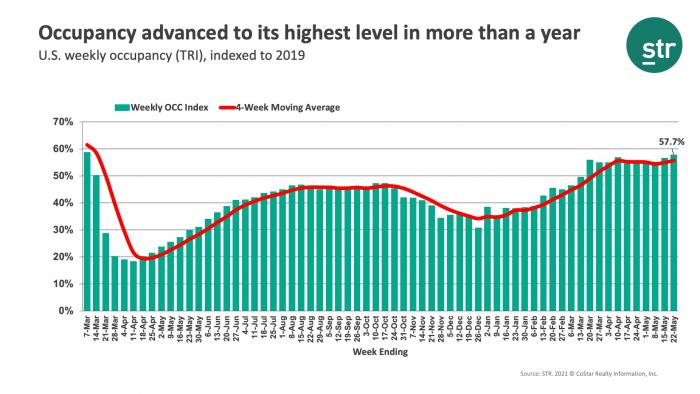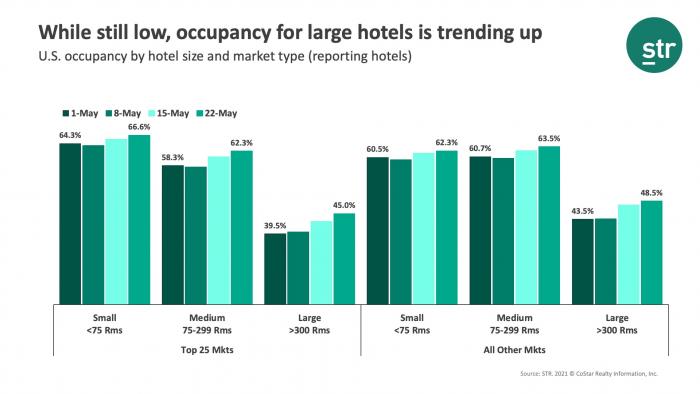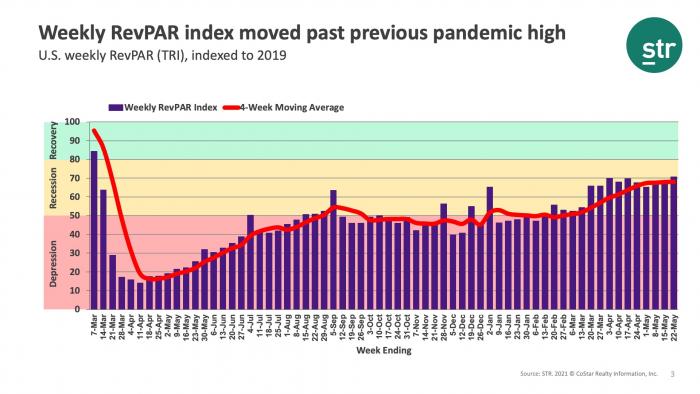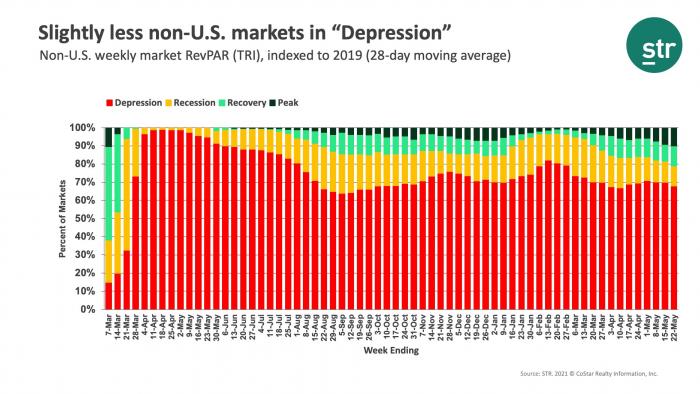Previous MRM versions: 8 May | 15 May
Week ending 22 May
The leisure-led demand surge marched forward with U.S. industry occupancy hitting 60.3%, surpassing the 60% level for the first time since early March 2020. On a total-room-inventory basis (TRI), which accounts for temporarily closed hotels, occupancy was 57.7%, which was also the highest since the pandemic’s start. More importantly, all key measures (demand, occupancy, ADR and RevPAR) reached a 62-week high, led by the Top 25 Markets, where on average, each hotel sold an additional 15 rooms last week versus the previous week. In total, the industry sold more than 3.3 million rooms each day during the week, a level like November 2019, but 300,000 less than what was sold daily in May 2019.




